Email marketing is one of the most powerful tools small businesses have at their disposal. It’s cost-effective, customizable, and has the potential to build meaningful connections with your audience. Whether you’re a startup launching your first campaign or a seasoned entrepreneur fine-tuning your strategy, email can help boost sales, retain customers, and build brand loyalty. But here’s the challenge many face—getting those emails into the right inbox with bulk email best practices for businesses.
Too often, poor practices or technical errors cause your carefully crafted messages to land in spam folders, losing your audience's trust and hurting your bottom line. If this scenario sounds all too familiar, don’t worry. With the right strategy, it’s possible to avoid the spam folder and make every email count. Below, we outline 18 best practices to help you streamline your bulk email efforts and maximize impact.
18 Bulk Email Best Practices for Businesses to Avoid Email Spam and Maximize Impact
1. Build a Targeted Email List
One of the biggest mistakes small businesses can make is purchasing email lists. Not only are these lists often filled with irrelevant or invalid addresses, but they also hurt your sender reputation. Instead, focus on collecting emails organically through website opt-ins, online events, and social media campaigns. This ensures your audience genuinely wants to hear from you.
2. Use Double Opt-In
A simple “click to confirm” email can make all the difference when ensuring quality leads. Double opt-in reduces the likelihood of fake or spammy sign-ups and helps you comply with regulations like GDPR and CAN-SPAM.
3. Authenticate Your Domain
Improve your email credibility by setting up domain authentication protocols like DKIM (DomainKeys Identified Mail), SPF (Sender Policy Framework), and DMARC (Domain-based Message Authentication, Reporting, and Conformance). These signals tell email providers that your messages are legitimate.
4. Send from a Custom Domain Email Address
Using a professional email address (e.g., yourname@company.com) instead of generic providers like Yahoo or Gmail gives your campaigns a polished, trustworthy look. It also helps avoid spam filters.
5. Segment Your Email Lists
Not all customers are the same—so why send them identical emails? Categorize your audience based on demographics, preferences, past behaviors, or purchase history. For example, personalized offers can be sent to returning customers while welcome discounts can be sent to new sign-ups.
6. Craft Subject Lines Strategically
Your subject line can make or break your open rates. Aim for short (under 50 characters) and engaging subject lines that pique curiosity or convey urgency—for example, “Your exclusive offer is waiting 🎉” or “Only 24 hours to upgrade your plan!” Avoid excessive capitalization or spammy phrases like “BUY NOW!!!”
7. Avoid Spam Trigger Words
Certain words and phrases are red flags for spam filters. Words like “Free,” “Act Now,” and “Best Price” might excite your audience, but overusing them will likely result in your email being flagged. Keep your message professional and natural.
8. Warm Up Your IP Address
If you’re just starting to send bulk emails or switching email service providers, gradually increase your email volume over time. This helps avoid overwhelming servers and improves your sender reputation.
9. Maintain a Consistent Sending Schedule
Consistency matters. When you email regularly (e.g., weekly or bi-weekly), you train your audience to expect content from you—building trust and boosting engagement (and reducing the likelihood of spam complaints).
10. Provide Value in Every Email
No one likes irrelevant or sales-heavy emails. Instead, focus on delivering useful, engaging, or exclusive content. For instance, share industry tips, special offers, customer success stories, or a “behind-the-scenes” look at your business.
11. Optimize for Mobile Devices
Over 60% of emails are opened on mobile devices. Make sure your message shines—use a responsive design, a single-column format, and fonts that are easy to read on smaller screens.
12. Use a Clear Call-to-Action (CTA)
Every email should leave your recipient with a clear next step. Whether it’s “Shop Now,” “Register Today,” or “Read More,” your CTA should stand out and align with your email’s purpose.
13. Balance Text and Images
Emails that are too image-heavy (or text-heavy) can trigger spam filters. Aim for a 60/40 ratio of text to images. Also, always include alternative text (alt text) for images in case they don’t load.
14. Include an Unsubscribe Option
Respect your audience’s choices. Providing a visible and easy-to-use unsubscribe button not only helps comply with email marketing laws but also reduces negative reactions to your emails.
15. Monitor and Clean Your Email List
Inactive subscribers and bounced addresses drag down your deliverability rate. Regularly update your list by removing recipients who haven’t engaged with your emails in a while.
16. Track Engagement Metrics
Use analytics tools to monitor performance metrics like open rates, click-through rates, and unsubscribe rates. Are certain types of content resonating with your audience? Adjust your strategy accordingly.
17. Test Emails Before Sending
Preview your message in various email clients (like Gmail and Apple Mail) to ensure it looks consistent everywhere. Use tools to check for spam issues and confirm that all links are working correctly.
18. Stay Compliant with Email Regulations
Ensure you’re aware of email marketing laws in your region. Include your physical business address, honor unsubscribe requests promptly, and never send unsolicited emails.
Build Your Way to Email Success
Effective email marketing requires more than catchy subject lines and attractive layouts—it’s about building a genuine connection with your audience. By implementing the simple yet powerful best practices listed above, you can significantly improve your email deliverability, elevate your engagement, and strengthen customer relationships.
Don’t just send emails—make an impact. It’s time to evaluate your email marketing strategy and take it to the next level. Need help designing campaigns that work? Start by applying these tips today and watch your business grow, one email at a time.
Need additional capital to achieve your business goals in 2025? How about capital that is zero percent interest? Fund&Grow has been helping entrepreneurs - just like you - access business funding since 2007, generating over $1.8 billion for 30,000+ business owners. Check out our free business funding resource to learn how to access the funding you need to stock up on inventory, invest in marketing, scale operations, or pay for any other business expense without paying interest, risking your assets as collateral, or compiling financial documentation.
Popular Posts
Instantly Pre-Qualify
Want Actionable Information, Tools and Resources To Quickly Acquire Business Capital, Credit and Funding?
I take tremendous pride in building positive and lasting relationships in my businesses and personal life. Every member of my team is committed to helping our clients get the maximum amount of funding possible and achieve their highest growth potential.

have a question?
Our business experts are available to answer questions Monday - Friday from 9:00 a.m. - 6:00 p.m. EST
Call Us:
(800) 996-0270
Email Us:
service@fundandgrow.com
Watch our business credit webinar:
Obtain $250,000 Business Credit
Let's Stay Connected on Social Media!

For over 15 years, Fund&Grow has helped 30,000+ business owners get access to over 1.6 Billion dollars of business funding. We're on a mission to empower the small business owner by helping them tap into the smartest form of funding: Unsecured Business Credit – so that they can achieve their goals and dreams.
Contact
Information
"Fund&Grow was created to empower small business owners, but more importantly, to support entreprenuers in achieving their business and personal goals while they lead the way towards innovation." - Ari Page CEO of Fund&Grow
Ari Page and the Fund&Grow team help business owners obtain access to credit despite the ambiguous lending climate. Many people feel ripped off and scammed by the bank bailouts and wonder why they can't use the system to their advantage the way the big banks did. If you have good credit, the Fund&Grow program will get you the funds you need to grow your business.
Find 4,000+ 4.9-star average customer testimonials on the following platforms: SoTellUs, Trustpilot, Google, BBB, among others.
All credit is subject to lender approval based upon credit criteria. Up to $250,000 in business credit is for highly qualified clients over the term of the membership with multiple credit card batches and/or credit lines. Introductory rates of 0% apply to purchases and/or balance transfers after which it reverts to an interest rate, which varies by lender as disclosed in the lending agreement. Fund&Grow is not a lender.
© 2025 Fund&Grow. All Rights Reserved.

 Share
Share








